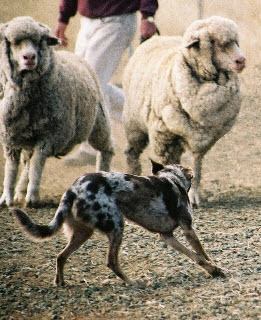| Owning a pet is a wonderful experience. Pets provide us with loyalty, companionship, love and affection, as well as many physical and psychological benefits. Pet owners are found to suffer fewer ailments, such as headaches, colds and hay fever. The presence of a pet reduces your heart rate and can lower your blood pressure. No one likes to think about it or talk about it, but just like every other living creature, our pets die. Every so often I have a conversation with someone about letting their pet go. Sometimes it’s a client and sometimes it’s a stranger. Sometimes I bring up the subject because I can see what the owner doesn’t want to see or admit and sometime someone asks me “When do you know it’s time?” |
On Friday, October 21, my husband and I found ourselves in our vet’s office, tears’ streaming down our faces asking each other “is it time?” Our 12, almost 13 year old, Josie was having some issues that we attributed to being old. She was a little stiff and slow getting around and had started suffering from incontinence. The incontinence was remedied with medication and we thought we dodged a bullet. Then on the morning on the 21st, she couldn’t get up and stay up. It was like she was drunk. She couldn’t control her back legs and now we had the opposite problem of the incontinence, she wasn’t going. She was alert, but she wasn’t herself. She either had a spinal tumor or degenerative myelopathy.
There is no cure or successful treatment of either condition. Any “treatment” would just delay the inevitable. But the options still ran through my head; Do we go for the neurological consult? How long with it take to get an appointment? Do we try whatever “treatment” the vet had to offer? Do we have them put in a catheter?
So as the tears and now snot (yes, I was a mess), continued, I realized that I was doing exactly what so many people do. At that moment I would have done anything and paid any amount of money to buy more time with Josie. But at what cost to her?
So in the end, you know it’s time to let them go when you realize that keeping them alive is for your benefit and not theirs.
There is no cure or successful treatment of either condition. Any “treatment” would just delay the inevitable. But the options still ran through my head; Do we go for the neurological consult? How long with it take to get an appointment? Do we try whatever “treatment” the vet had to offer? Do we have them put in a catheter?
So as the tears and now snot (yes, I was a mess), continued, I realized that I was doing exactly what so many people do. At that moment I would have done anything and paid any amount of money to buy more time with Josie. But at what cost to her?
So in the end, you know it’s time to let them go when you realize that keeping them alive is for your benefit and not theirs.


 RSS Feed
RSS Feed